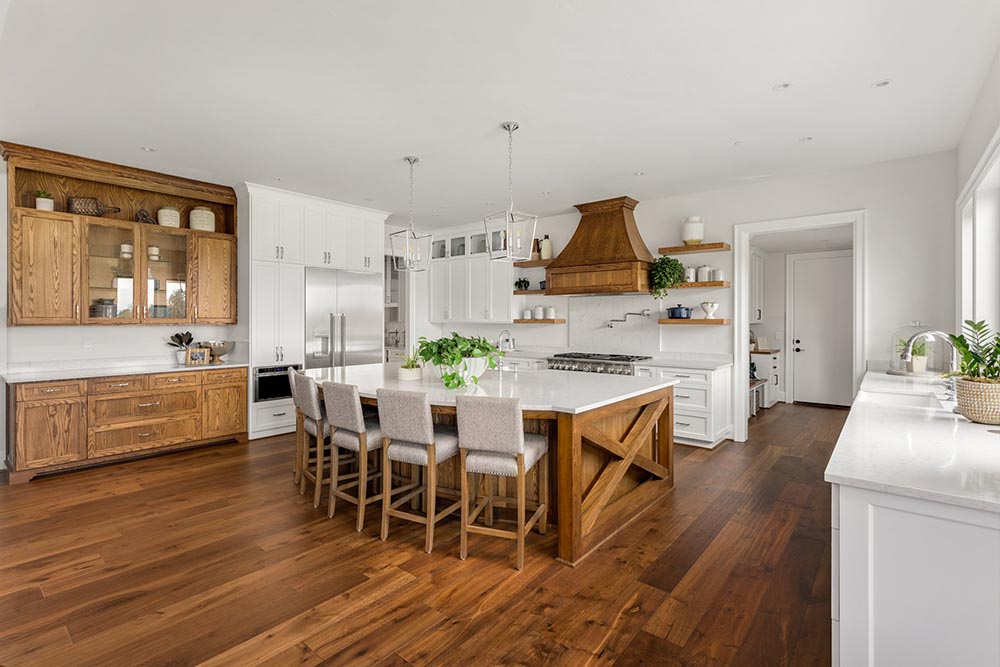How to choose the right flooring for your kitchen room
How to Choose the Right Flooring for Your Kitchen
The kitchen is one of the most important rooms in your home. It's where you cook, eat, and entertain guests. So it's important to choose flooring that's durable, easy to clean, and stylish.
When choosing flooring for your kitchen, there are a few things you need to keep in mind. First, consider the type of traffic your kitchen will get. If you have a busy family, you'll need flooring that can withstand a lot of wear and tear. Second, think about the style of your kitchen. Do you want a traditional look, a modern look, or something in between? Third, consider your budget. Flooring can range in price from a few dollars per square foot to hundreds of dollars per square foot.
Here are some of the most popular types of flooring for kitchens:

- Hardwood floors are a classic choice for kitchens. They're durable, easy to clean, and can add warmth and character to a room. However, hardwood floors can be expensive and require regular maintenance.
- Laminate floors are a good option for kitchens on a budget. They're made from a durable material that looks like real wood, but they're much less expensive. Laminate floors are also easy to clean and maintain.
- Tile floors are another durable option for kitchens. They're resistant to water and stains, and they can be easy to clean. Tile floors can also add a touch of luxury to a kitchen. However, tile floors can be expensive and difficult to install.
- Vinyl floors are a low-cost option for kitchens. They're made from a durable material that's resistant to water and stains. Vinyl floors are also easy to clean and install. However, vinyl floors can be noisy and they don't always look as high-end as other types of flooring.
Here are some tips for choosing the right flooring for your kitchen:
- Consider the size of your kitchen. If you have a small kitchen, you'll want to choose a flooring that won't make the room feel cramped. Light-colored floors and small-patterned tiles can help to make a small kitchen feel more spacious.
- Think about the layout of your kitchen. If you have a kitchen with a lot of cabinets and appliances, you'll want to choose a flooring that's easy to clean around. Avoid choosing a flooring that has a lot of crevices or seams, as these areas can be difficult to clean.
- Consider the style of your kitchen. The style of your kitchen will help you narrow down your choices. If you have a traditional kitchen, you might want to choose hardwood floors or tile floors. If you have a modern kitchen, you might want to choose laminate floors or vinyl floors.
- Consider your budget. Your budget will also help you narrow down your choices. Hardwood floors are the most expensive option, while laminate floors and vinyl floors are the most affordable.

Here are some of the best flooring options for specific kitchen layouts:
- For kitchens with islands, you'll want to choose a flooring that's durable and easy to clean. Hardwood floors, laminate floors, and tile floors are all good options for kitchens with islands.
- For kitchens with pets, you'll want to choose a flooring that's durable and resistant to scratches and stains. Hardwood floors, laminate floors, and tile floors are all good options for kitchens with pets.
- For kitchens with kids, you'll want to choose a flooring that's durable and easy to clean. Hardwood floors, laminate floors, and vinyl floors are all good options for kitchens with kids.
No matter what your kitchen looks like, there's a flooring option out there that's perfect for you. By considering the factors listed above, you can choose the right flooring that will make your kitchen look beautiful and last for years to come.

How to install flooring in your kitchen
Installing flooring in your kitchen is a relatively straightforward project that can be completed in a weekend. However, it's important to follow the steps carefully to ensure that the finished product is both durable and attractive.
Here are the steps involved in installing flooring in your kitchen:
- Prepare the subfloor. The first step is to make sure that the subfloor is level and smooth. If there are any cracks or uneven areas, you'll need to fill them in with a patching compound. Once the subfloor is smooth, you can apply a coat of primer to help the adhesive bond to the surface.
- Install the underlayment. An underlayment is a layer of material that is installed between the subfloor and the flooring. It helps to provide a cushion for the flooring and can also
Comments
Post a Comment